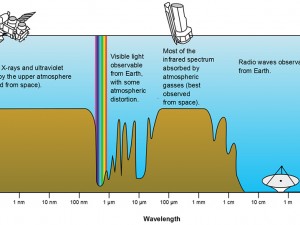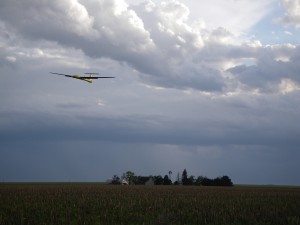
Michael K. Simpson, PhD
Executive Director Secure
Secure World Foundation
Broomfield, Colo.
www.swfound.org
At a time of great competitive pressure and intense policy debate, one area of broad agreement among government officials, industrial leaders, space entrepreneurs, academics, and interest groups was that our ability to continue benefitting from assets in Earth orbit faced some serious and imminent challenges. Importantly, these concerns were not confined to prepared remarks and public statements. Private conversations about business opportunities were peppered with thoughts about sustainability. Discussions about new space ventures were quickly linked to questions about how to avoid creating new debris and how to manage end-of-life disposal. Sustainability, it appears, has gone mainstream.
Even the generation gap that has seemed to characterize some of the early discussions of space sustainability was missing. It was mentioned as frequently by the veteran space professionals attending the symposium as it was by the younger ones attending the Space Generation Fusion Forum that preceded it. Similarly, it was as common a topic among the representatives of countries recently involved in space activities as it was among those of countries that have been there since the early days of the space age.
Some of the frequently mentioned challenges to sustainable use of space were ones that have received a lot of attention in these pages and elsewhere: space debris, space situational awareness, space traffic management, and radio frequency interference. But there were also themes that have more recently emerged as credible parts of the discussion, such as on-orbit servicing as a means of extending the useful life of space assets, or of aiding in their responsible disposal. The inevitability of cooperation was mentioned so often that one would have thought speakers were working from a common list of talking points. And several participants seized the opportunity to hammer home the fact that to be truly sustainable, space activity had to solve the problem of affordability.
Although a large number of panels and speeches at the symposium included references to sustainability, one panel was specifically dedicated to the subject. Entitled “Long Term Sustainability of Space – Practices for the Future,” it pulled together representatives of industry, academia, and government to explore the many meanings that sustainability has acquired as the sector confronts the challenges of keeping space open for applications, innovation, and development.
Jim Simpson from Boeing Space and Intelligence Systems went straight to the heart of the affordability issue mentioning several initiatives that have reduced the cost of recent payloads, while noting that each one of these steps toward progress was an important “event,” where what the system needed was a “routine” of cost-reducing best practices. He saw a future where leveraging international and commercial partnerships and effective cost management would be essential to making space benefits more affordable.
Representing the European External Action Service, the diplomatic arm of the European Union, Ambassador Jacek Bylica outlined the impact the ICoC could have on sustainability even though it would not be a legally binding instrument. He stressed the importance of the consultative process in defining best practices since the effectiveness of a code of conduct depends on how broadly countries accept ownership of its principles.
Following the presentations, a large number of questions were directed at the panel ranging from technical issues in controlling costs to broad concerns about the likelihood of international participation in space situational awareness. On the latter point several panelists noted that the necessary infrastructure was already in place around the world and that what remained was to find agreement on how to share the data. A number of questions followed up on the international theme to ask about how China and India could be better integrated into the discussion of sustainability with the response that as both countries demonstrate more and more success with their space programs, their self-interest in sustainable space also grows.
Of special importance to all of us with a strong professional interest in Earth observation and remote sensing, the concluding remarks from this panel recalled themes that had been raised in earlier discussions of disaster management and economic development: space assets had permitted many developing countries to Kay Sears, President of Intelsat General, noted that the health and stability of space was essential to her firm’s continuity of service and was a major incentive behind Intelsat’s leadership and involvement in the creation of the Space Data Association (SDA). Providing a very concrete example to the international and commercial cooperation that Simpson had invoked, Ms. Sears described how SDA added critical maneuvering data to the JSpOC (Joint Space Operations Center) catalog information to deliver greatly improved conjunction analysis without compromising proprietary data. She also addressed how automation had helped Intelsat address affordability issues by creating a system where seven people were able to control a fleet of 85 spacecraft.
International perspective on the panel was provided in part by Dr. Kazuto Suzuki who noted the growing interest in space activities among Asian countries and the growing likelihood that international understanding of best practices will converge during 2013 as various broad-based discussions on subjects such as the proposed International Code of Conduct (ICoC) and the quest for Transparency and Confidence Building Measures (TCBM’s) proceed globally.
Representing the European External Action Service, the diplomatic arm of the European Union, Ambassador Jacek Bylica outlined the impact the ICoC could have on sustainability even though it would not be a legally binding instrument. He stressed the importance of the consultative process in defining best practices since the effectiveness of a code of conduct depends on how broadly countries accept ownership of its principles.
Following the presentations, a large number of questions were directed at the panel ranging from technical issues in controlling costs to broad concerns about the likelihood of international participation in space situational awareness. On the latter point several panelists noted that the necessary infrastructure was already in place around the world and that what remained was to find agreement on how to share the data. A number of questions followed up on the international theme to ask about how China and India could be better integrated into the discussion of sustainability with the response that as both countries demonstrate more and more success with their space programs, their self-interest in sustainable space also grows.
Of special importance to all of us with a strong professional interest in Earth observation and remote sensing, the concluding remarks from this panel recalled themes that had been raised in earlier discussions of disaster management and economic development: space assets had permitted many developing countries to substitute space-based technologies for terrestrial infrastructure at great savings in cost. These countries, representing the “Other Three Billion” people who trail the rest of Earth’s human population in economic development, could see their entire growth strategy crumble if the use of space were to become unsustainable.
“Several participants seized the opportunity to hammer home the fact that to be truly sustainable, space activity had to solve the problem of affordability.”
Ultimately we return to the theme of affordability. For space to be sustainable, industry has to manage costs, government has to foster a stable policy environment and minimize procedural obstacles, the international community needs to cooperate to minimize the high and unpredictable costs of debris-ridden orbits and chaotic traffic management, and an entire space sector has to ensure that not only current users but also future ones can have sustained access to the benefits of space.



